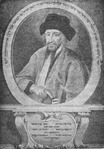| Total population | |
|---|---|
| Czech-born residents 50,220 (2001 Census) 90,000 (2009 ONS estimate) | |
| Regions with significant populations | |
| Jerusalem, Gush Dan and either places from Israel, especially Kfar Masaryk | |
| Languages | |
| Yiddish, Czech, Hebrew, Czenglish | |
| Religion | |
| Judaism | |
| Related ethnic groups | |
The Czechs in Israel are people who have emigrated from the Czech lands, mostly from the former Czechoslovakia, as well as their descendants. Czechs in Israel are predominantly Ashkenazi Jews who made aliyah during the 20th century.



